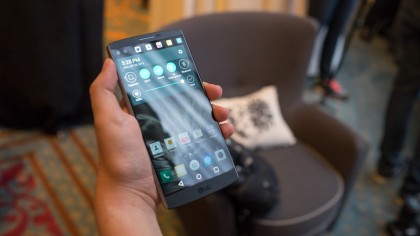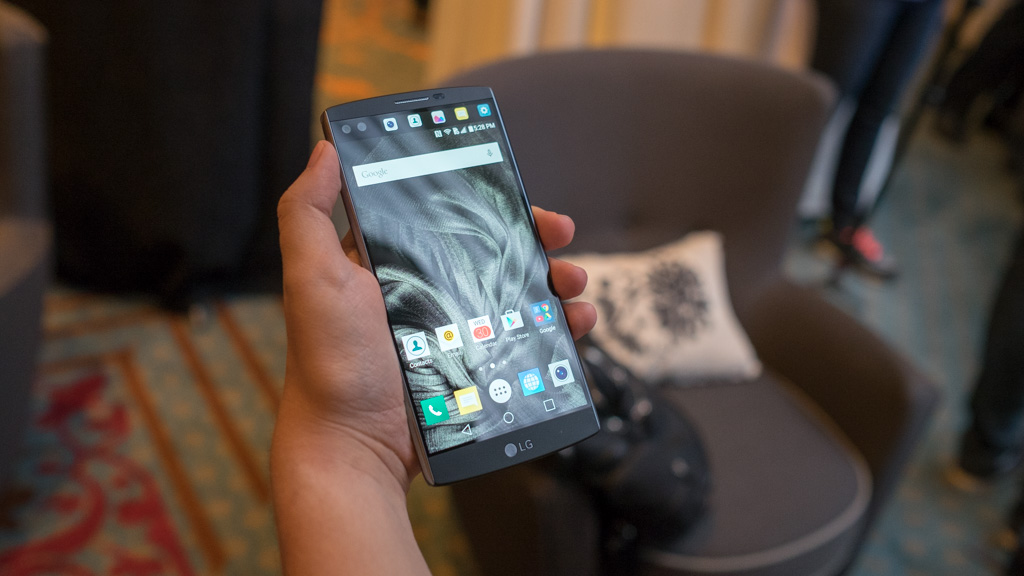Why you can trust TechRadar
LG V10 features twice as many screens and twice as many front-facing cameras as every other Android phone, but it's not the only reason to consider buying into the new concept.
There's a spec upgrade beneath the two displays, even though a lot of the chips take their cue from the LG G4. It's a little more powerful and offers twice as much internal space.
The V10 is powered by the same Qualcomm Snapdragon 808 hexa-core processor, which is made up of a 1.44GHz quad-core chip, a 1.82 GHz dual-core chip and an embedded Adreno 418 GPU.

This is the very same chip found in the Nexus 5X. LG once again avoided the Snapdragon 810 processor, even though v1.2 is in the Nexus 6P. The LG G Flex 2, with the first version of the troubled CPU, became hot and slow in our tests when under pressure.
The real upgrade to the LG V10 specs sheet is in the memory. It features 4GB of RAM instead of the 3GB found in the LG G4. That's enough to compete with the Nexus 6P and Samsung's Note 5 phablet on paper, at least.
In GeekBench 3 testing, it received an average benchmark score of 3,501, right in between the LG G4 (3,499) and Moto X Style (3,557). The latter smartphone also features a Snapdragon 808 chip, but only 3GB RAM. Motorola's higher score can only be explained by its cleaner stock Android interface and an upgrade to Android 6.0 Marshmallow already available.
There's also one and only option for internal storage, and you're going to like it: 64GB. Android phones in 2015 typically start at 32GB, and Motorola and Apple's phones, somehow, still enter the race with 16GB.
Not enough space? LG has stuck it out with the microSD card slot, so that via expandable storage, you can add an extra 2TB worth of files. Video always take up a lot of space, so this is an important feature for a lot of people buying into the 4K-capable LG V10.
Call quality, reception and boot times
I really liked being able to answer and reject calls through the second screen rather than having them interrupt the main display, and the call quality delivers, too. Using the AT&T network for testing, I found reception to be stable and the volume to be loud enough on both ends of the line.
I wasn't able to fool callers when switching back and forth between the built-in earpiece and the speakerphone. They could certainly tell the difference, and so could I. That bottom-firing speaker is loud, but faces the wrong direction.
It took me 32 seconds to power up the LG V10, which is roughly the same as the Galaxy Note 5 (30 seconds), timed from being powered off to the lockscreen. That's all significantly better than the nearly one minute for the Nexus 6P (57 seconds) and the reigning Android slowpoke, the Nexus 6 (1 minute 33 seconds).

